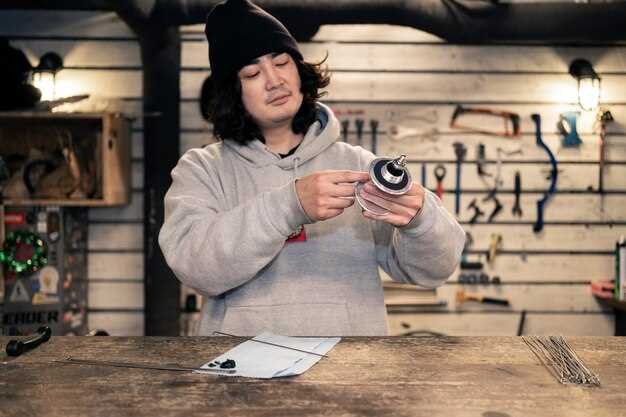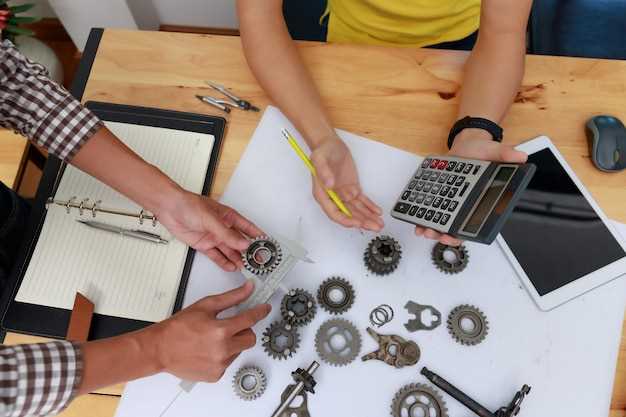
Using secondhand parts safely and wisely
- Dominique Kaye
- 0
- Posted on

In today’s economy, where affordability plays a crucial role in decision-making, the use of secondhand parts has become a practical solution for many consumers. Whether it’s for an automobile, electronic device, or home appliance, opting for used components can significantly reduce costs while still maintaining functionality. However, the allure of lower prices must be balanced with careful consideration and strategic approaches to ensure safety and reliability.
Purchasing secondhand parts involves inherent risks, from potential incompatibility issues to unknown wear and tear. Thus, understanding how to navigate the market for used components is essential. This article explores smart strategies that can help consumers make informed choices, focusing on how to assess the quality of parts and ensure they meet necessary safety standards. By following these guidelines, individuals can enjoy the benefits of affordability without compromising on safety.
The journey into the world of secondhand parts requires a keen eye and a thoughtful approach. From verifying the source and condition of the components to knowing when it’s best to invest in new parts instead, these strategies provide a roadmap for users who wish to adopt a smart and cautious approach to secondhand purchases. Embracing this practice not only fosters sustainability but also empowers consumers to make financially sound decisions in their daily lives.
Evaluating Quality and Reliability of Used Parts

When considering the affordability of used parts, evaluating their quality and reliability is crucial for ensuring a successful outcome. High-quality secondhand parts can provide significant savings while maintaining performance, but poor-quality components can lead to additional costs and unforeseen issues.
Start by investigating the history of the part. Understanding how it was used previously can offer insights into its remaining lifespan and potential for failure. Parts with a documented maintenance history or prior usage in low-stress applications are often more reliable than those with an unknown background.
Visual inspection is essential. Look for signs of wear, corrosion, or damage. Scratches, dents, and rust can indicate a part that may not perform optimally. Additionally, check for any modifications that could affect compatibility with your system.
Another important step is to verify the source of the used parts. Always purchase from reputable dealers or salvage yards that offer warranties or return policies. This practice helps mitigate risks associated with purchasing potentially faulty components.
Lastly, seek out reviews or testimonials regarding the performance of specific used parts. Feedback from other users can provide valuable insights into the reliability of the component and guide your decision-making process. By taking these steps, you can ensure that your investment in secondhand parts is both safe and cost-effective.
Tips for Finding Affordable and Safe Secondhand Components

When searching for used parts, start by researching reputable sources. Online marketplaces, local classifieds, and specialized forums can provide a plethora of options. Always read reviews and check seller ratings to gauge their reliability.
One effective strategy is to join community groups or forums dedicated to your specific industry or interest. Members often share trusted sources for secondhand components and might even sell their own parts at competitive prices.
Inspect the parts thoroughly before purchasing. Whether buying in-person or online, request detailed photos and descriptions to verify the condition. Look for signs of wear, damage, or any indications that the parts have been improperly maintained.
It’s essential to ask about usage history. Understanding how the previous owner used the parts can give insight into their overall condition and functionality. If possible, seek components that have been refurbished or tested for quality assurance.
Consider the warranty or return policy when buying used parts. A seller offering some form of guarantee can provide you with peace of mind, ensuring that you have recourse should the component fail shortly after purchase.
Networking with professionals in your field can also lead to valuable leads on affordable used parts. Attend trade shows or local meetups, as these events can provide opportunities to connect with sellers who specialize in secondhand components.
Lastly, compare prices across multiple platforms to ensure you are getting the best deal. Sometimes, similar parts may be listed at varying prices, so do your due diligence to find both affordability and safety in your secondhand component choices.
Best Practices for Installing and Testing Used Parts
When working with used parts, it is essential to follow best practices to ensure safety and functionality. First, always inspect the parts thoroughly for any signs of damage, wear, or corrosion. Visually checking and feeling for irregularities can help identify potential issues before installation.
Next, ensure that the used parts are compatible with your specific make and model. Cross-reference part numbers and specifications with your vehicle’s documentation to avoid any mismatches that might cause failures or inefficiencies.
Prior to installation, clean the used parts meticulously. Dirt, grease, and contaminants can lead to improper fitment or failure. Use the appropriate cleaning solutions and tools to prepare the surfaces for a smooth operation.
During installation, follow the recommended torque specifications and procedures outlined in the service manual. This step is crucial in ensuring that the parts are secured properly, which can prevent future failures or hazardous situations.
After installation, conduct a thorough testing process. Start by visually inspecting the installation for any misplaced components. Then, perform a functional test to ensure that all systems operate correctly. This could include checking the mechanical functions, electrical connections, or fluid systems associated with the used parts.
Finally, keep a close eye on the performance of the used parts during initial usage. Monitor for any unusual sounds, vibrations, or functionality that deviates from the norm. Addressing any issues early can save time and potential costs associated with failures down the line.
